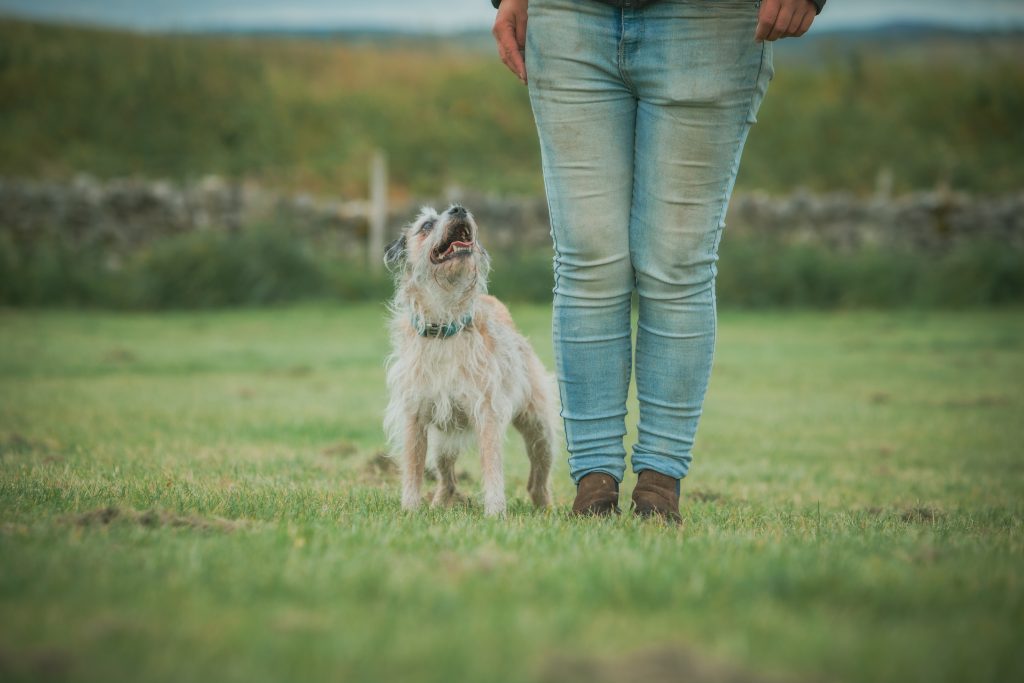I get asked this question a LOT
and the answer is always the same…

It depends
The joy of having a furry friend can sometimes be challenging, especially when dealing with perceived aggression or a barking dog.
Whether it’s due to fear, territorial instincts or a lack of proper training, an aggressive looking dog can cause stress for both you and those around you.
However, with patience, understanding, and effective techniques, you can help your dog become a calmer, more well-behaved companion!
In this blog, we’ll explore some strategies to stop an aggressive, barking dog and create a harmonious environment for you, your pet, and your community.
First things first…
1. Identify the Triggers
Understanding what triggers your dog’s aggressive behaviour, is the first step towards addressing the issue.
Common triggers include other dogs, unfamiliar people or animals, loud noises, or perceived threats.
Observe your dog’s behaviour and take note of the situations that cause them to bark aggressively.
This insight will help you tailor your training approach to address their specific triggers.
2. Socialisation and Training
Socialization is key to preventing and addressing aggression in dogs.
Expose your dog to various people, animals, and environments from a young age to help them feel more comfortable and less threatened.
Enroll your dog in obedience classes to teach them basic commands and proper behaviour.
Training isn’t your cure for rehabilitation work, but its great because not only does it stimulate their mind, but also strengthens the bond between you and your pet.
If you have an under socialised adult dog, you can still help them to learn how to, the process takes a little bit longer but is completely possible with the right attitude.
3. Positive Reinforcement
Positive reinforcement is a powerful tool in modifying a dog’s behaviour.
Reward your dog for calm and non-aggressive behaviour with treats, praise, and affection. Whenever your dog refrains from barking aggressively, offer them a treat or engage in a fun activity.
This conditions them to associate good behaviour with positive outcomes.
4. Desensitisation
Desensitisation involves gradually exposing your dog to their triggers in a controlled manner.
For instance, if your dog becomes aggressive towards strangers, start by having a friend stand to the side at a distance where your dog notices them but doesn’t react aggressively towards them.
Reward your dog’s calm behaviour and slowly decrease the distance over time.
This technique helps your dog build a more positive association with the trigger and allows you to train an alternative behaviour in the process.
5. Provide Distractions and Mental Stimulation
A bored dog is more likely to engage in unwanted behaviours, including excessive barking.
Provide your dog with daily mental and physical stimulation, alongside regular exercise to ensure they aren’t bored. You can add interactive toys, puzzle games, and regular exercise into your daily regime and don’t skip out on the bonding exercises through play and training that you need too.
A tired and mentally engaged dog is less likely to bark aggressively out of frustration or boredom.
6. Consult a Professional
If your dog’s aggressive behaviour persists despite your efforts, consider seeking help from a professional. They can assess your dog’s behaviour, identify underlying causes, and develop a personalised training plan.
In some cases, aggressive behaviour might stem from medical issues, so consulting a veterinarian is also crucial.
7. Stay Calm and Consistent
Your dog can pick up on your emotions, so it’s important to remain calm and composed when addressing their aggressive behaviour.
Consistency is key in any training regime.
Set clear rules and boundaries for your dog and ensure that everyone in your household follows them.
Mixed messages can confuse your dog and hinder their progress.
Conclusion
Stopping an aggressive, barking dog requires patience, dedication, and a thorough understanding of your pet’s behaviour.
By identifying triggers, providing proper training, using positive reinforcement, and seeking professional help before things escalate, you can help your furry companion become a well-behaved, calmer, and happier member of your household.
Remember that every dog is unique, so tailoring your approach to your dog’s specific needs will yield the best results.
With time, effort, and love, you can transform your aggressive barker into a peaceful and contented companion.
If you’ve enjoyed this blog and would like more professional assistance, then book in for a free consultation call with me, so that we can discuss your individual dogs needs in more detail
Click here to book your consultation call
Speak soon,
Claire.
